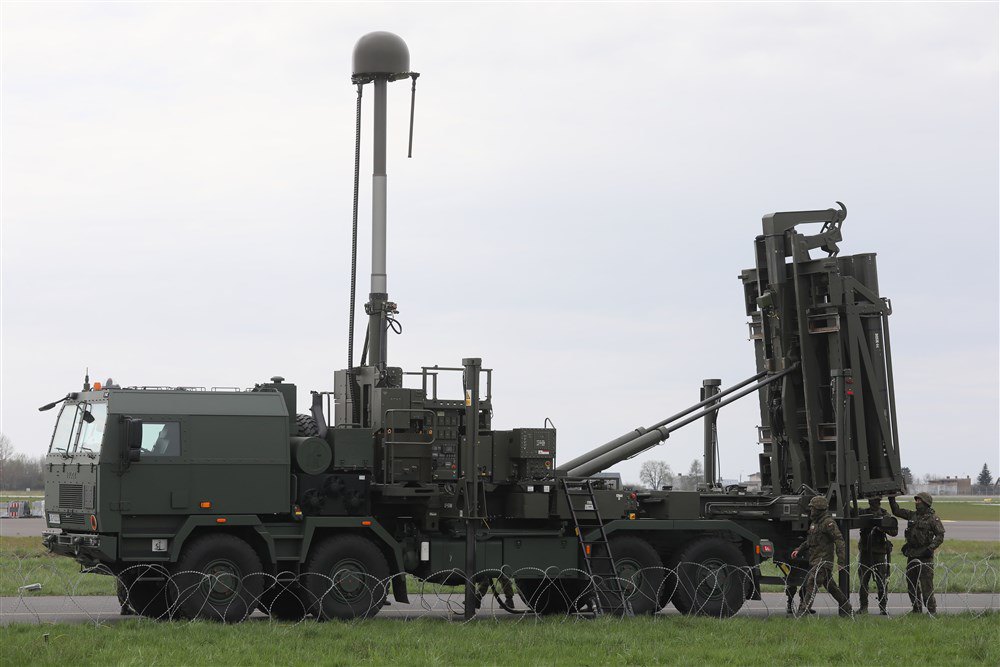The world is polarising

If Ukraine did, in fact, receive the Patriot systems (more on this below), then – following the earlier dispatch of 90 missiles from Israeli stockpiles to support the Ukrainian Defence Forces – this would constitute the largest arms transfer in the history of Ukrainian–Israeli relations.
The transfer of 300,000 missiles from European Command’s depots, which had simply been stored in the Middle East, should not be included in this comparison – that decision was made in Washington, not Tel Aviv.
Why has Israel revised its long-standing policy of non-interference? Previous humanitarian aid sent to Ukraine fell squarely within that framework.
It is increasingly likely that reports of Moscow providing support during the 7 October Gaza attacks are not merely speculative. Moscow has clearly aligned itself with one side, supplying Tehran with S-300 systems and Su-35S aircraft. Ballistic missile upgrades are presumed to be underway not only for North Korea. Israeli officials are undoubtedly well aware of these developments.
They also understand how the mass production of Shahed drone kits will be used – and why GPS guidance systems are being recalibrated.
German and American assistance
Israel is currently integrating new air defence platforms into its arsenal – notably, Arrow-3 and David’s Sling. In addition, the latest American anti-missile system, THAAD, has been delivered. As a result, the Patriot batteries have been placed into storage.

There are multiple reasons for this: delivery is three times cheaper than with imports; the radars are modernised; production has been localised in Israel; and the systems are more specialised in intercepting ballistic threats.
Previously, Israel received as many as five Patriot batteries on long-term lease from Germany, as compensation for not retaliating during Iraqi ballistic missile attacks in the first Gulf War.
In the 1990s, the initial deliveries were funded by the United States and the Netherlands as emergency assistance following Saddam Hussein’s invasion of Kuwait. In 2003, Germany supplied localisation equipment – mounted on upgraded MAN vehicles and featuring next-generation AN/MPQ-65 radar.
“Am I my brother’s keeper?”
The four Patriot batteries received from Germany – mounted on mobile platforms and equipped with German-made missiles – were, most likely, the subject of behind-the-scenes negotiations.
The United States, meanwhile, is accommodating the current administration’s insistence that Europe shoulder a greater share of the costs associated with the war. Former President Trump, seeking to portray himself as a neutral mediator, supports this approach. Notably, the delivery in question is not a direct supply but rather a permitted re-export arrangement.
Israel has formally returned the batteries to Germany, and it is now Germany’s decision as to where they will be sent next.
Germany, however, is well aware of the diplomatic risks. With more than 700,000 IRIS-T missiles and battery units already transferred to Ukraine, Berlin cannot afford to escalate tensions with Russia further.
Russian commentary on the Patriot system frequently highlights its origins in the 1990s, downplaying its capabilities. What is often omitted is that the systems have undergone at least two major rounds of modernisation. While ballistic interception is not their primary function (apart from the RAS-3 configuration), they are nonetheless capable of it.

So, are they outdated or not?
In May 2007, Israel’s Ministry of Defence signed a contract with Raytheon worth $100 million to upgrade its Patriot batteries to GEM (Guidance Enhanced Missile) standard.
And Patriot systems are not limited to ballistic threats. In cases where drones such as the Shahed are approaching radar stations and repositioning is not feasible, it is more efficient to intercept them with a missile than to risk significant losses.
Cruise missile threats also remain. Although systems like the Kh-101 now deploy decoys, this poses little challenge to the Patriot’s advanced radar capabilities.
Furthermore, weapons such as the Kinzhal – while expensive and hyped – remain vulnerable. GEM+ missiles can intercept Korean ballistic missiles, and even earlier RAS-1 models were effective against Scuds.
An axis of authoritarianism versus the democracies
It is essential to engage with Jerusalem – to allow Israel to benefit from the knowledge gained in Ukraine’s war against the Tehran–Pyongyang–Moscow axis. This experience could then be scaled and analysed further, while Ukraine gains access to systems capable of countering UAVs and ballistic threats.
The Kremlin is clearly moving towards deeper cooperation with Tehran – this needs to be underscored. Israel is already engaged in a de facto conflict with Iran. In this context, the enemy of my enemy becomes a strategic partner.
For now, these mobile Patriot batteries – with the potential for further upgrades at German facilities and a supply of compatible, though not the most modern, missiles – represent a valuable reinforcement for Ukrainian air defences. A one-third increase in the number of Patriot batteries is a strategically significant development. It will lead to more ambushes on Russian aircraft, more intercepted missiles, and enhanced protection of rear-area cities from aerial terror.







